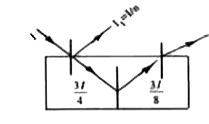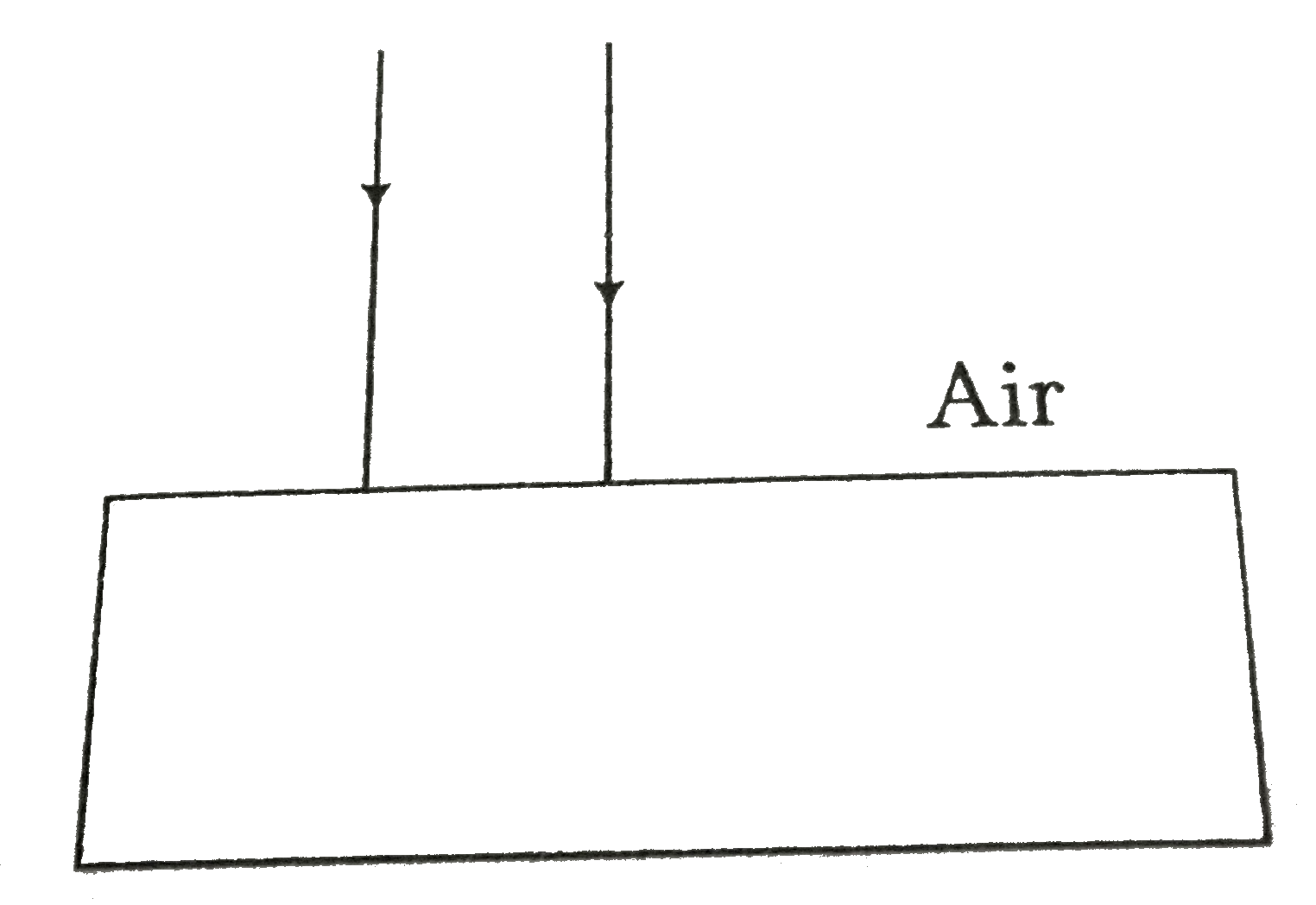A parallel beam of light of intensity is incident an a glass plate, 25% of light is reflected by upper surface and 50% of light is reflected by lower surface. The ratio of maximum to minimum intensity is interference region of reflected rays is (Assume that cohernt light reflected from lower surface I refects from upper surface it entirely come out).
The intensity of transmitted light is
The intensity of light reflected fro lower surface is
.

Topper's Solved these Questions
Similar Questions
A parallel beam of light of intensity I is incident on a glass plate. 25% of light is reflected in any reflection by upper surface and 50% of light is reflected by any reflection from lower surface. Rest is refracted The ratio of maximum to minimum intensity in interference region of reflected rays is

View SolutionLight of intensity 50W/m2 is incident on a arae of 1m2 in such a way that 25% of light is reflected back. Find the force exerted by light on surface if light incident perpendicularly
View Solution
Knowledge Check
A parallel beam of light of intensity I is incident on a glass plate. 25% of light is reflected in any reflection by upper surface and 50% of light is reflected by any reflection from lower surface. Rest is refracted The ratio of maximum to minimum intensity in interference region of reflected rays is
 A⎛⎜ ⎜⎝12+√3812−√38⎞⎟ ⎟⎠2B⎛⎜ ⎜⎝14+√3812−√38⎞⎟ ⎟⎠2C58DNone of these
A⎛⎜ ⎜⎝12+√3812−√38⎞⎟ ⎟⎠2B⎛⎜ ⎜⎝14+√3812−√38⎞⎟ ⎟⎠2C58DNone of theseLight of intensity 50W/m2 is incident on a arae of 1m2 in such a way that 25% of light is reflected back. Find the force exerted by light on surface if light incident perpendicularly
A10.8×10−8NB15.8×10−8NC20.8×10−8ND25.8×10−8NIf a parallel beam of light having intensity I is incident normally on a perfectly reflecting surface, the force exerted on the surface, equal F. When the surface is held at an angle θ, the force is
A2FtanθBFcosθC2Fcos2θD2F
A narrow monochromatic beam of light of intensity I is incident on a glass plate. Another identical glass plate is kept close to the first one and parallel to it. Each plate reflects 25% of the incident light and transmits the remaining. Calculate the ratio of minimum and maximum intensity in the interference pattern fromed by two beams obtained after reflection from each plate.
View SolutionA laser beam of power 20W incident normally on a surface. if 25% light is absorbed and rest reflected find magnitude of force experienced by the surface.
View SolutionA laser beam of power 20W incident normally on a surface. if 25% light is absorbed and rest reflected find magnitude of force experienced by the surface.
View SolutionA ray of light of intensity I is incident on a parallel glass slab at a point A as show. It undergoes partial reflection and refraction. At each reflaction 25% of incident energy is reflected. The rays AB and A'B' undergo interference. The ratio Imax/Imin is

View SolutionWhen light is reflected from a surface it can be either regular reflection or diffuse reflection. The essential difference between regularly and diffusely reflecting surfaces is that
View Solution
